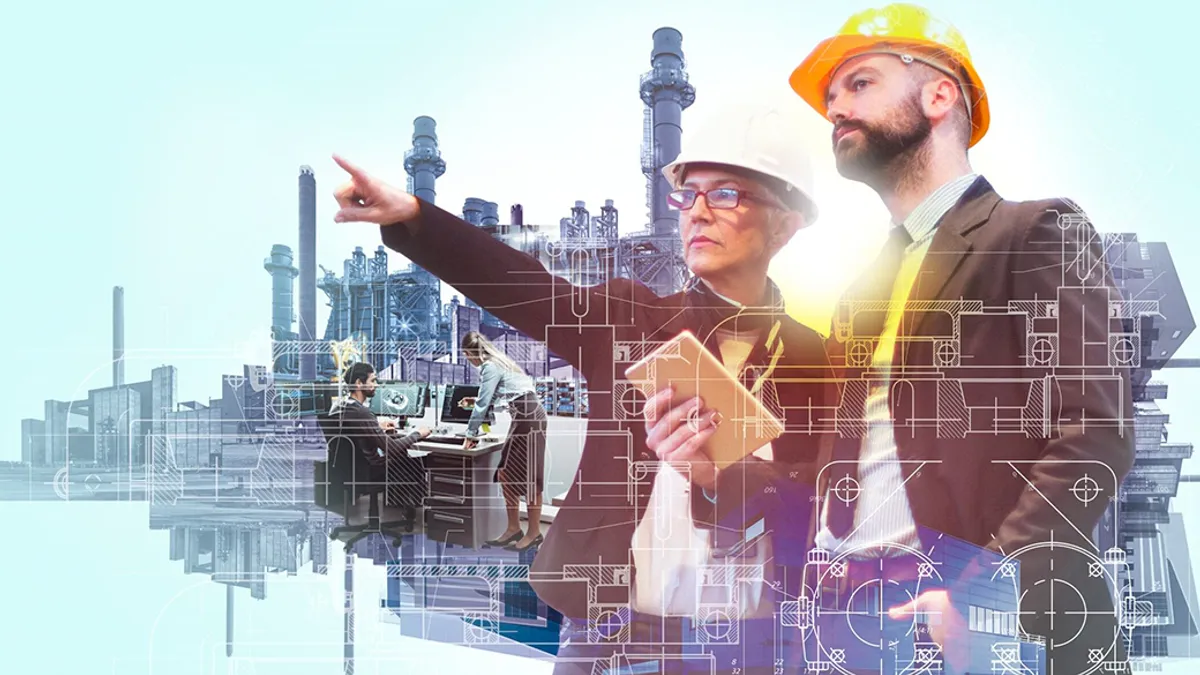High-risk industries are witnessing the power of artificial intelligence (AI) as a tool for change, with technologies such as predictive analysis and computer vision systems altering the face of workplace health and safety. AI’s potential to revolutionize safety standards in the energy and utilities workplace is significant, yet it presents its own set of challenges.
The transformative role of AI in workplace safety
AI has established itself as a powerful tool, being leveraged to augment Occupational Safety and Health (OSH), particularly in industries considered high-risk, where a proactive, AI-powered approach leads to timely interventions and safer workplaces.
- Predictive analysis. Delving deeper into these advancements, predictive analysis, as suggested by its name, allows for the anticipation of potential hazards. By processing vast amounts of historical safety data, AI can discern patterns and correlations, predicting possible incidents and failure points before they occur. This proactive approach allows for the implementation of preventative measures, reducing the likelihood of accidents and incidents. Furthermore, continuous monitoring and real-time alerts can ensure that any safety-related anomalies are promptly addressed.
- Wearables and employee health monitoring systems. By offering real-time health data, these systems permit early detection of fatigue, stress, or other health-related concerns that may affect an employee’s ability to safely perform tasks. Additionally, wearables equipped with location tracking capabilities can ensure quick response times in emergency situations, further enhancing safety protocols. This innovative approach to health and safety not only fosters a safer work environment but also demonstrates a forward- thinking commitment to employee wellbeing.
- Computer vision systems. By intelligently analyzing visual data in real-time, these systems can identify potential hazards that may escape the human eye. These systems can monitor workers’ movements, identifying unsafe practices and alerting supervisors in real time, thus preventing potential accidents. What if someone’s not wearing a hardhat or a vest? This method allows for immediate action to be taken, mitigating risk before it manifests as a tangible threat. The ability to monitor vast areas continuously, even under challenging conditions, further enhances the safety protocols.
- Cobots. Additionally, collaborative robots (cobots) are increasingly being used to undertake high-risk tasks, reducing the exposure of human workers to potentially hazardous situations. Cobots are designed with precision and efficiency at their core, reducing the risk of error-induced accidents. By assuming the more dangerous roles within the workplace, cobots safeguard human employees from exposure to potential risks. This shift not only protects the workforce but also allows for human talent to be redirected towards strategic, cognitive tasks where they can add more value. Some utility companies even deploy robots to perform autonomous inspection rounds with no human intervention in unmanned facilities.
- Virtual reality (VR) safety training. VR safety training offers a dynamic and immersive approach to workforce education, allowing participants to engage with realistic simulations that enhance their understanding of critical safety protocols. Through gamification and 3D environments, VR training programs provide hands-on experience in recognizing and mitigating hazards without the associated risks of real-world scenarios. This innovative method not only reinforces best practices but also promotes retention and application of safety measures on the job, ensuring a safer and more prepared workforce.
Challenges and risks associated with AI implementation
The implementation of Artificial Intelligence (AI) in the realm of workplace safety is accompanied by a set of challenges that require careful navigation. Among these, the advent of connected technology brings with it a heightened susceptibility to cyber vulnerabilities. As such, the necessity for robust cybersecurity measures becomes paramount. The long-term benefits of AI are undeniable, yet the initial financial outlay can be considerable. This is particularly true when considering the need for high-quality data to power AI algorithms, the procurement of which can be costly.
Ethical concerns also emerge as a challenge when implementing AI. The potential for bias and discrimination in AI algorithms can lead to unfair practices, undermining the overall goal of improving workplace safety. Furthermore, the use of AI can potentially violate workers’ privacy, especially if not properly managed.
The future of AI in energy and utilities
Looking ahead, the role of AI in the energy and utilities sector is set to grow. Its potential to enhance safety and operational efficiency is significant. Yet, it requires continuous innovation and strategic thinking to fully embrace its potential.
While challenges are present, the rewards — in terms of improved safety and operational efficiency — are worth the risks when approached intentionally. In the face of rapid technological advancement, the commitment to collaboration, innovation, and forward-thinking remains paramount.
In essence, AI’s benefits in workplace safety are multifold. By minimizing human error, enhancing situational awareness, and fostering a proactive approach to safety management, AI has the potential to significantly contribute to overall improvements.
However, while these advancements promise to make workplaces safer, they also necessitate a commitment to continuous learning and adaptation. As AI continues to evolve, so too must our understanding and application of this technology in the realm of workplace safety for energy and utility companies.










